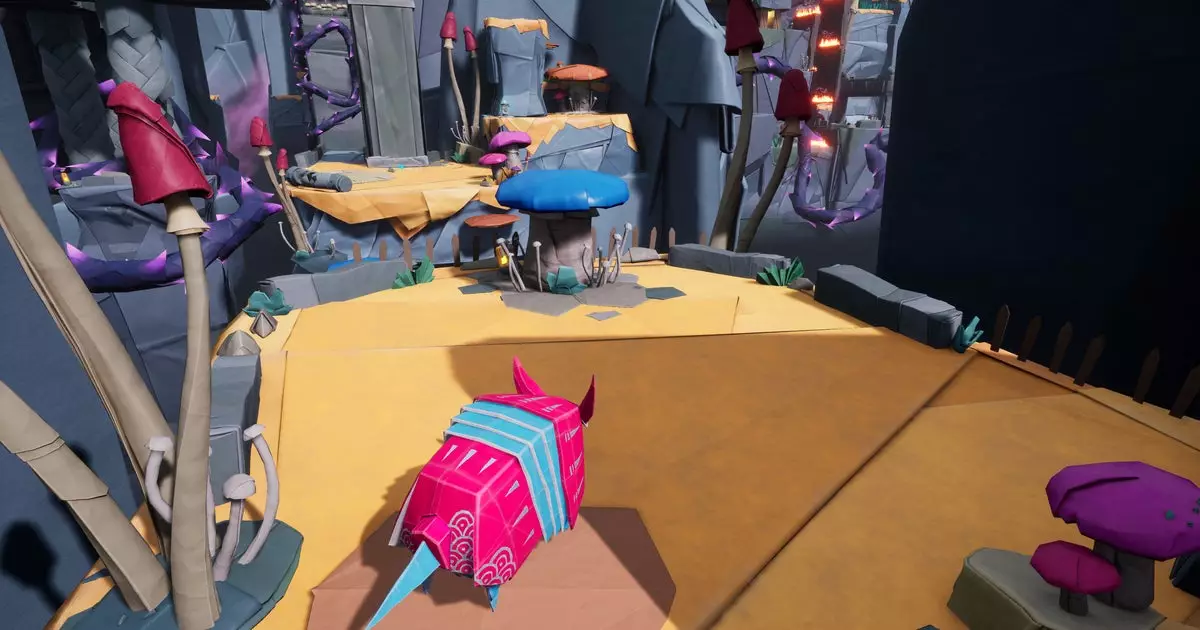The world of video games is rife with irony, and few examples are as vivid as that embodied by Hirogami, a game that attempts to celebrate the tactile beauty of paper art amidst a narrative filled with digital threats. This unique juxtaposition raises a fundamental question: how can a digital format authentically pay homage to a tangible medium? While the premise of Hirogami may evoke admiration for its intention, the irony of its execution cannot be overlooked. As the narrative unfolds, players take on the role of Hiro, a pliable character equipped to navigate a realm fraught with digital “blight”. However, one might wonder if a more authentic expression of this theme would not come in a printed form rather than an electronic one.
Unpacking the Gameplay Mechanics
Hirogami’s gameplay mechanics are intriguingly designed around the art of origami, where players manipulate their character to assume various forms such as a ground-pounding frog or a rolling armadillo. This emphasis on transformation speaks to the foundational essence of origami; however, it simultaneously highlights a disconnection with the reality of paper. Transforming a digital character to perform escapades trivializes the delicate intricacies of folded paper art. The game claims to represent a world rich with fragility and enchantment, inviting players to explore a realm of secrets. Yet, one cannot help but question: how profound can the experience be when it is mediated through a digital interface that, by definition, lacks the authenticity of physical art?
A Critical Look at the Art Direction
Despite the apparent contradictions, the art direction in Hirogami is visually striking. Vibrant colors and detailed landscapes evoke a sense of wonder, drawing players into a fantastical world. However, the aesthetics, no matter how captivating, cannot fully mask the irony inherent in a game that extols paper-based artistry while only existing in virtual reality. This paradox begs the question: can digital representations serve as adequate substitutes for tactile experiences? While the game’s lush visual style may succeed in garnering interest, it runs the risk of trivializing the manual dexterity and appreciation required in actual origami.
Additionally, Hirogami boasts a traditional instrumental soundtrack that aims to deepen the player’s connection to its thematic roots. Such musical choices are commendable and provide a sense of authenticity and cultural homage. However, it raises concerns: is auditory nostalgia enough to convey the tactile essence of paper? While the soundtrack enriches the experience, it alone does not bridge the gap between the digital and the physical. The ultimate question remains whether the audio-visual pairing in Hirogami can successfully capture the spirit of origami or if it merely acts as a backdrop to a digital landscape.
The overarching irony of Hirogami is a reflection of today’s society—where digital mediums increasingly overshadow traditional forms of expression. This nuance weaves into the narrative, as players battle the “blight,” representing encroaching digital forces that threaten the natural order of creatively expressing oneself with paper. Yet here lies another paradox: by creating Hirogami digitally, the developers inadvertently contribute to the very threat they illustrate. The impending demise of print media heralded by our digital age raises questions about the future of art forms like origami—they risk being relegated to mere nostalgia without the nurturing environment of physical presence.
Ultimately, Hirogami offers a complex reflection on the tensions between digital and analog art forms. While the game showcases engaging mechanics and beautiful visuals, its underlying irony complicates its noble intentions. As the game is set for a 2025 release, its reception will depend on how skillfully it navigates these paradoxes, both in terms of gameplay engagement and thematic coherence. As we plunge deeper into an era dominated by digital consumption, the legacy of paper art hangs delicately in the balance, embodied in a brave yet ironic new shape.


Leave a Reply